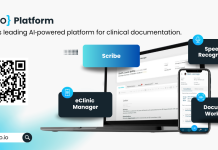More government agencies are reassessing their current systems, turning to human-centered designs to improve their public sector service experience
With the constant state of global change, departments have become increasingly passionate about the role of comprehensive digital transformation in this, particularly its role in enabling agile and personalized processes that can improve the experiences they deliver.
Promoting a successful digital transformation through understanding people
However, embarking on a successful digital transformation is not just about updating technology but also understanding how citizens will react to it, use it and adopt it.
And a big part of transforming how the public uses digital government services is making the experiences more human.
After all, serving people is an agency’s purpose. And yet, one of the biggest challenges in their transformation agendas is ensuring all demographics have equitable access. New systems that are not used, or are not used right, do not deliver the expected return on investment.
People spend time re-learning, sending questions, asking others for help, or avoiding new systems, which can negate the expected benefits that come with a digital transformation for both the agency and the people they serve.
Delivering positive experiences for a populace with hugely different needs takes human-centered design
Delivering positive experiences for a populace with hugely different needs takes human-centered design. It means designing products, services, or experiences for—and with—the people who use them.
It is about understanding stakeholders as people with multi-dimensional needs rather than as a one-size-fits-all customer segment. It is about seeing people through the lens of their life moments. Think of it as problem-solving with immersive empathy.
Human-centered experiences perform better
Recent research highlights the clear opportunity for government departments to bring humanity into these experiences.
It reveals that one in three people feels treated more like a number than a human when they receive public services. Not only is this finding eye-opening, but in addition, 30% think that agencies don’t treat their concerns with sensitivity, which is up from 20% in 2019.
The irony here is that while human-centered design can profoundly transform experiences, putting people first is innovative (which is good) and disruptive (which is challenging). Departments can sometimes be reluctant to pursue something so different and unfamiliar. Yet increasingly, they want to push against the status quo to improve experiences.
Ensuring a better public sector service experience in all sectors
Education is one of the areas that is seeing this change occur. COVID-19 was, in one way, the “tech tipping point” for teachers, students and administrators. Although schooling faced considerable challenges, the sector rallied to find solutions and kept learning institutions up and running.
The changes implemented by digital transformation not only helped manage pandemic disruption, but also laid the template and platforms for education to take its transformation agenda in a more truly human-centered design direction: putting all parties involved and their needs front and center.
Best for All Central: Online resources for all
One example of this process in action can be seen across the pond in the state of Tennessee and the launch of Best for All Central. Created by the state’s Department of Education, it is a one-stop online resource for administrators, educators, students, and parents.
While numerous other educational organizations also quickly stood up these types of portals, Tennessee used it as a springboard to advance the department’s desire to advance equity and access to high-quality educational materials, leveraging the momentum of the rapid pivot to “turn on” virtual schools for the state’s nursery through secondary students.
With the platform established during the pandemic era, the department then started to explore the next evolution and how to better deliver on its mission of equitable access.
Over the course of four months, they used a collaborative human-centered design approach to map out the next evolution of Best for All, which included surveying numerous stakeholders and focus groups.
The result was the identification of several future state experience concepts including an interface refresh, onboarding tour, personalized dashboards, and an educator learning portal.
They are among several enhancements that are now helping the Department give education stakeholders (from students, to administrators, teachers, caregivers, and parents) what they need to improve educational outcomes for the people of Tennessee.
Personas provide a way for citizen-facing departments to understand and segment the public
In addition, the process created several different and unique “personas” that represent and document the specific needs and motivations of different stakeholder groups. Personas provide a way for government communicators, UX designers, content strategists, development teams and other citizen-facing departments to understand and segment the public.
With established personas, education teams can develop content, products, and conversations that are tailored to the mindset of the relevant audience. It all leads to experiences that put the end user first.
Room for growth in employee training
Employee training is another area ripe for human-centered design. Every day the human services and public safety workforces make important decisions with significant impacts on people’s lives. This work requires well-tuned skills and experience in understanding and navigating human behavior.
To accomplish this, public sector organizations are turning to immersive learning and virtual reality – helping workers strengthen their ability to rapidly discuss decision points and make effective choices by transporting trainees into simulated environments and engage them with realistic scenarios.
By using immersive storytelling and interactive voice-based scenarios, public departments are literally putting people at the center of how learning is designed and absorbed by and for their front-line workers.
This approach can completely transform how their workers hone their data-gathering and decision-making skills, increasing the likelihood of delivering better services to taxpayers.
The applications of this can be seen across a variety of different government areas, from child welfare to staff retention, but the one constant is that human-centered design demands a department’s willingness to experiment—to evaluate, learn and tweak based on feedback on concepts and prototypes that are not finished.
Taking advantage of the power human-centered designs can provide
In short, embracing human-centered design requires a big shift in mindset, but the results can truly bring about more valuable outcomes for communities. While it is human nature to come into a big project with assumptions and reluctance, it is possible and even – dare we say more fun – to come in with open minds.
Instead of embarking on a journey to validate preconceived notions, human-centered design listens for possibilities. Because the very mission of government is to serve, it makes perfect sense to include those being served in the creation of those service experiences.
This piece was written and provided by Avik Batra and Bree Fouss.











